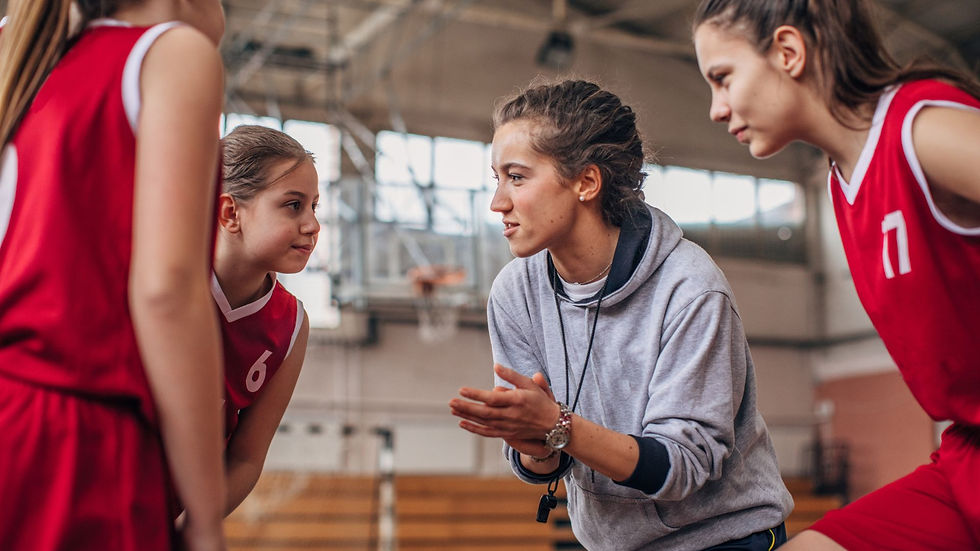The Vital Role of CPR in Sports Safety
- Laneisha Byrd
- Sep 2, 2024
- 4 min read
In the dynamic world of sports, where athletes push the boundaries of physical excellence, the importance of preparedness for cardiac emergencies cannot be overstated. Sudden cardiac arrest can strike without warning, affecting individuals of all ages and fitness levels. However, by understanding the critical role of Cardiopulmonary Resuscitation (CPR) in sports safety and promoting CPR certification within sports communities, we can create a safer environment for athletes and all those involved in sports events.

The Intersection of CPR and Sports Safety
Sports and physical activity play a vital role in promoting health, camaraderie, and personal growth. However, the dynamic nature of sports also brings the potential for injuries and emergencies. CPR is a critical skill that can make a life-saving difference during such situations. In the event of a sudden cardiac arrest or a traumatic injury leading to unconsciousness and impaired breathing, immediate CPR intervention can sustain blood circulation until professional help arrives, potentially preventing fatal outcomes.
Empowering Athletes and Coaches
Athletes should familiarize themselves with basic CPR techniques, including chest compressions and rescue breaths. Hands-on practice ensures confidence and skill retention in responding to emergencies. Understanding the signs of cardiac arrest, such as sudden loss of consciousness and absence of breathing, empowers athletes to take immediate action. CPR education should also include instruction on using Automated External Defibrillators (AEDs), as athletes should know the location of AEDs in sports facilities and how to operate them in case of emergencies.

Coaches play a crucial role as first responders during sports-related emergencies. CPR training for coaches equips them with the skills and confidence to lead in critical moments. By encouraging all team members to undergo CPR training, coaches can create a prepared and collectively trained team, enhancing the overall safety and well-being of athletes. Developing and communicating clear emergency action plans to address injuries, cardiac events, and other emergencies ensures a swift and organized response.
Promoting CPR Certification in Sports Communities
While understanding the critical role of CPR in sports emergencies is vital, it's equally important to promote CPR certification within sports communities. Encouraging coaches, athletes, parents, and spectators to become CPR certified can enhance the safety net for athletes. Here's how:
Coach and Staff Training: Coaches and sports staff should undergo CPR certification training as part of their qualifications. Many organizations offer specific courses tailored to sports professionals. This training ensures that the individuals responsible for the athletes' well-being are equipped to respond effectively in emergencies.
Athlete Awareness: Athletes themselves can benefit from CPR training. While they may not be responsible for administering CPR during a game, having this knowledge can be valuable, both on and off the field. Athletes can also serve as role models and advocates for CPR training within their sports communities.
Parent and Spectator Education: Encourage parents and spectators to become CPR certified. In the event of a cardiac emergency, a trained bystander can make a significant impact while waiting for professional help to arrive. This education extends the safety network to include those in the stands and on the sidelines.
AED Placement and Accessibility: Ensure that sports facilities have AEDs accessible and that designated individuals are trained to use them. Proper signage and visibility of AEDs are crucial. Having an AED within a few minutes' reach can be a game-changer in responding to cardiac emergencies.
Regular Training Updates: CPR guidelines may evolve, and skills can fade over time. Encourage periodic CPR refresher courses to keep knowledge and skills up to date. Staying informed about the latest CPR techniques and guidelines ensures that sports communities are prepared for the unexpected.
Community Partnerships: Collaborate with local healthcare organizations, schools, and EMS providers to organize CPR certification events or workshops for the sports community. Building partnerships can facilitate access to training resources and promote a culture of preparedness.

Incorporating CPR into Sports Safety Protocols
Integrating CPR training into sports safety protocols emphasizes prevention and preparedness. Athletes and coaches become proactive contributors to the safety of their teams. By collaborating with medical professionals and trainers, sports communities can receive expert guidance on injury prevention, recognition, and response. Regular CPR refresher training ensures that individuals stay updated with the latest techniques and guidelines.
The Impact of CPR in Sports
The impact of CPR in sports safety is undeniable. During an exercise-related sudden cardiac arrest, bystander CPR can double or triple a victim's chance of survival. By equipping athletes and coaches with CPR education, we transform the sports community into a network of empowered first responders. Understanding the importance of CPR, recognizing the signs of emergencies, and having the confidence to initiate life-saving interventions contribute to the overall well-being of athletes.

Conclusion
In the world of sports and athletics, where dedication, discipline, and teamwork are celebrated, preparedness for cardiac emergencies should be a top priority. By understanding the vital role of CPR in sports safety and promoting CPR certification within sports communities, we embrace our shared responsibility to protect athletes and make sports safer for everyone. CPR is more than a life-saving skill; it's a game-saving skill that empowers individuals to respond effectively when every second counts. As sports continue to inspire teamwork, resilience, and the pursuit of excellence, let them also be a platform where safety and preparedness unite athletes, coaches, and communities in their commitment to each other's health and well-being.






Comments